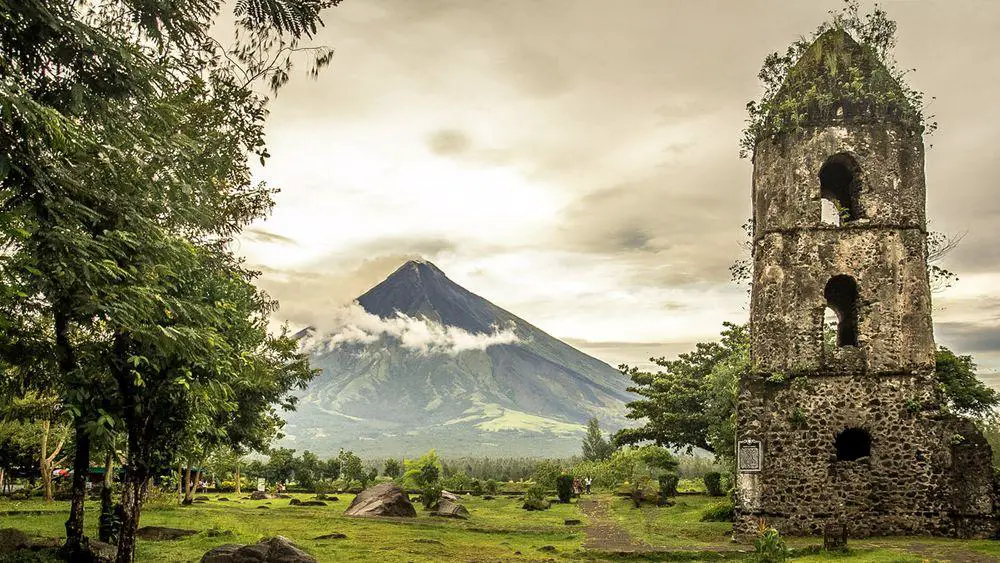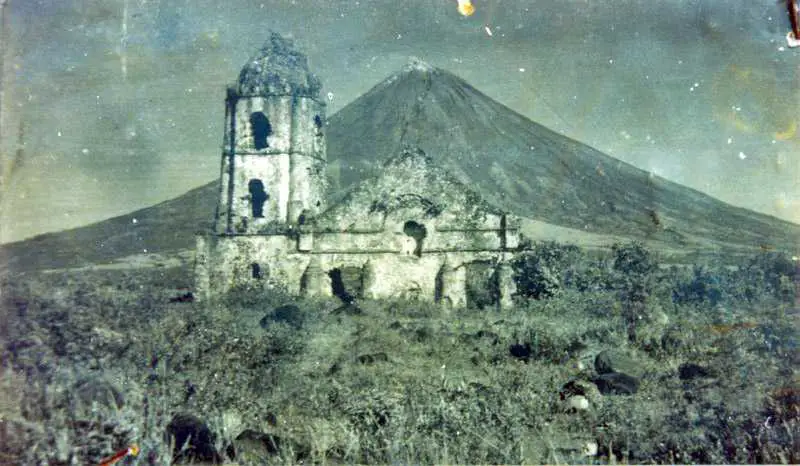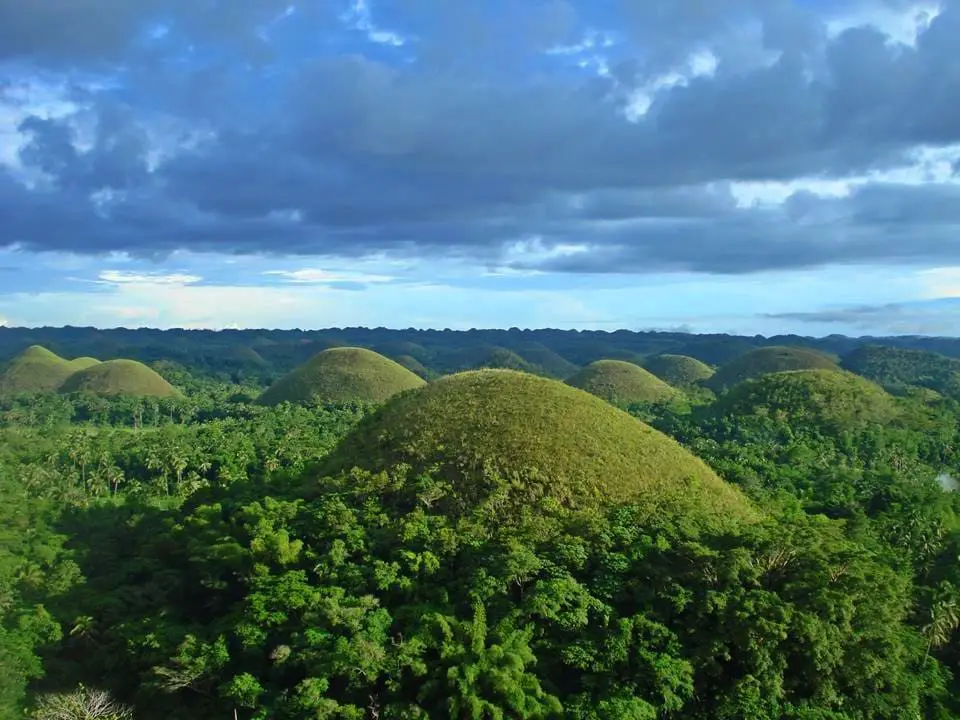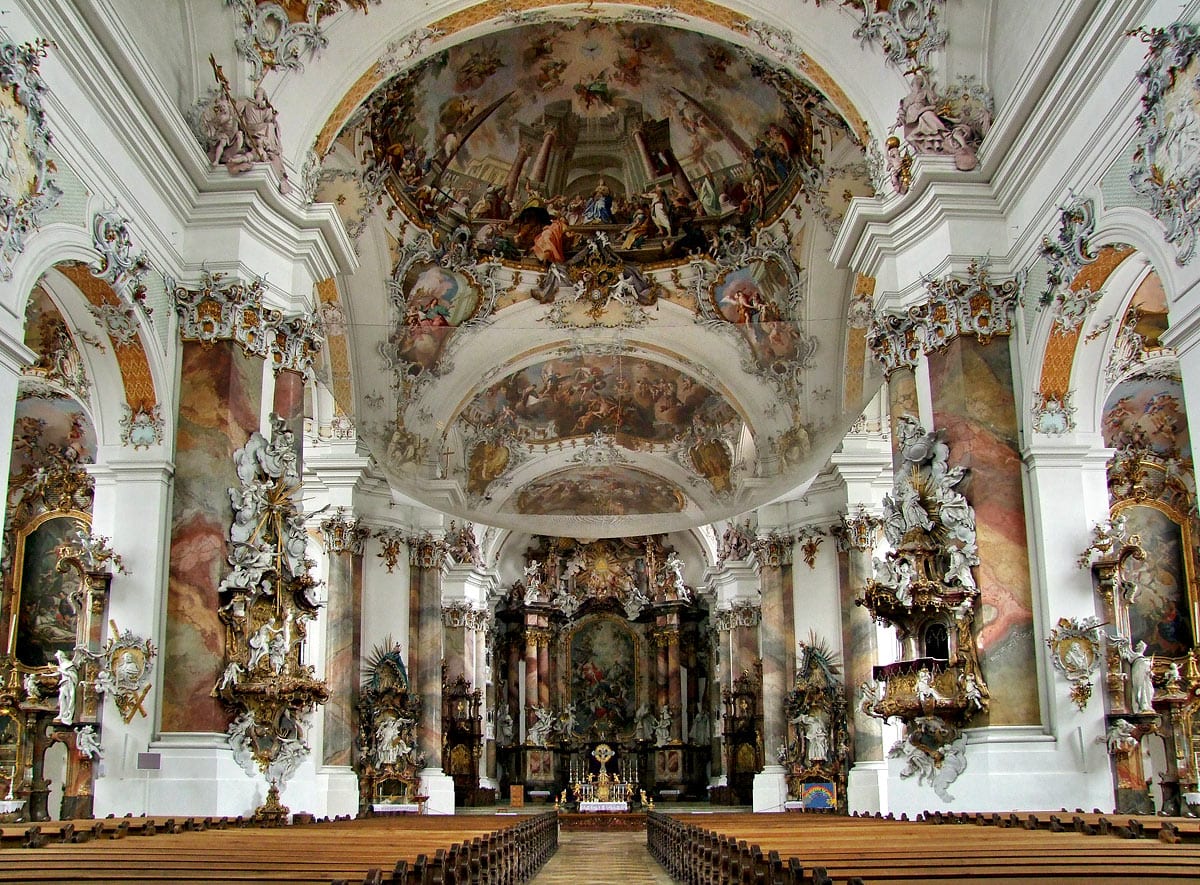World 🢖 Asia 🢖 Philippines
Churches 🢔 Religious architecture 🢔 Architectural wonders 🢔 Categories of wonders
Wonder
Belfry of Cagsawa Church

 In short
In short
Ruins of once beautiful church near Mayon Volcano serve as a reminder: landscape near volcanoes might be beautiful but every moment one should expect sudden death. Belfry of Cagsawa Church is all what remains of prosperous town after it was destroyed by eruption in the 1st February, 1814.
 46.3%
46.3%
GPS coordinates
Location, address
Alternate names
Architectural style
Year of construction
Branch of Christianity
Map of the site
If you see this after your page is loaded completely, leafletJS files are missing.
 In detail
In detail
Mayon Volcano
Mayon Volcano is an iconic mountain with one of the most perfect, symmetric cones in the world. This volcano is 2,462 m tall, with very steep (35 – 40 degrees) sides. This is one of the most active volcanoes in the Philippines and over the last four centuries, it has erupted at least 48 times.
Volcano is active up to this day – last classic eruption took place in 2009, but violent phreatic eruption, which was caused by the explosion of groundwater vapor, took place in 2013.
Cagsawa Church
In the Philippines are numerous beautiful Baroque churches, mostly built by Franciscans in the 18th century. The lively Cagsawa town was no exception – the fine church was built under the leadership of Friar Francisco Blanco in 1724, in the site of an earlier church from 1636 which was burned down by Dutch pirates. Cagsawa village was even older – it was founded in the late 16th century. In 1724 there were some 4 thousand people in the town and it was the richest town in this prosperous area.

1 February, 1814
Terrible tragedy took place in the early 1st February 1814, when the 10 km distant Mayon Volcano erupted with an unseen force.
The mountain spewed a column of glowing stones and ash high in the air, thousands of tons. Rivers of melted stone flowed down the steep slopes towards villages. People tried to hide in higher places but were killed by a rain of hot stones. Soon the scene of despair was hidden by terrible darkness.
A few hours later the dust subsided and light reached the former site of Cagsawa and other local towns. The sight was terrible – five towns were completely destroyed, the ground was covered with bodies of dead and wounded people. A layer of hot ashes covered the land which some hours earlier was lush and green, in some places layer was up to 9 m thick. The site of the nearby Budiao town changed beyond recognition – only the tops of coconut palms perched out from the layer of ash.
It is not possible to tell how many people died in this catastrophe. Some written sources of those times mention that at least 12 thousand died, although now a more subtle figure of 1,200 – 2,200 victims is mentioned.
Death in the church
As the eruption started, bells in the belfry of Cagsawa Church started to ring, inviting people to hide behind the stone walls of the church.
Unfortunately this did not help: hot ash fell on the roof, the church burned and was partly destroyed, lava stream entered it. More than 200 people died inside.
According to a legend, one of the possible victims was a gorgeous young woman who was pregnant. Early in the morning of the 1st of February, her beloved man was mortally wounded by a jealous Spanish nobleman. The girl dragged the wounded man towards the church in order to save their lives from the eruption. As they reached the door, it was shut in front of them because the rain of hot ashes started. No one knows what happened to these people but romantic souls hope that miracle saved their lives (1).
Aftermath… and tourism
Survivors of this tragedy resettled to the nearby Daraga – former part of Cagsawa town. In Daraga also is located a historical church – it was built in 1773.
Ruins of Cagsawa church were left intact. For more than a century the facade part persisted but it was destroyed by earthquakes in the middle of the 20th century.
Today only belfry and smaller parts of the structure remain.
Unfortunately this by far was not the last calamity in Albay – devastating natural catastrophes are common here, for example, mudslides in 2006 killed more than 1,200 people not far from Cagsawa.
Now the ruins of Cagsawa Belfry belong to the most popular tourist destinations in this part of the Philippines. People come, enjoy the beautiful scenery, maybe think a while about life and death… life goes on.
References
- Legend of Cagsawa. Dancing with the Sahdows. Accessed in the 22nd August 2014
 Linked articles
Linked articles

Wonders of Philippines
The charming Philippines in many respects represent the true Southern tropical paradise. This archipelago consists of thousands of diverse islands and the wealth and diversity of the countless landmarks here are hard to grasp.

Wonders of Asia
Any other continent (and part of the world) seems small if compared to Asia. This refers also to natural and man-made heritage: in Asia are not just thousands of great landmarks, there are found landmarks created by thousands of diverse cultures from ancient Phoenicians to the mysterious small people in the Philippines and eastern islands of Indonesia.

Churches
Throughout the millennia Christian churches have been the epitome of architecture and arts achievements in Western culture.
 Recommended books
Recommended books
The Silent Sentinel
San Pablo Church has been the sentinel protecting the people of the Cagayan Valley throughout all of the tumultuous and sanguinary histories of the Philippines. As one of the oldest churches in the entire Philippines archipelago, it has faithfully served its people for close to three hundred years going back to the days of the Spanish friars.



No kahar reached the church..it was way far from the volcano..only pyroclastic and ashes..reached Church and probably lahar